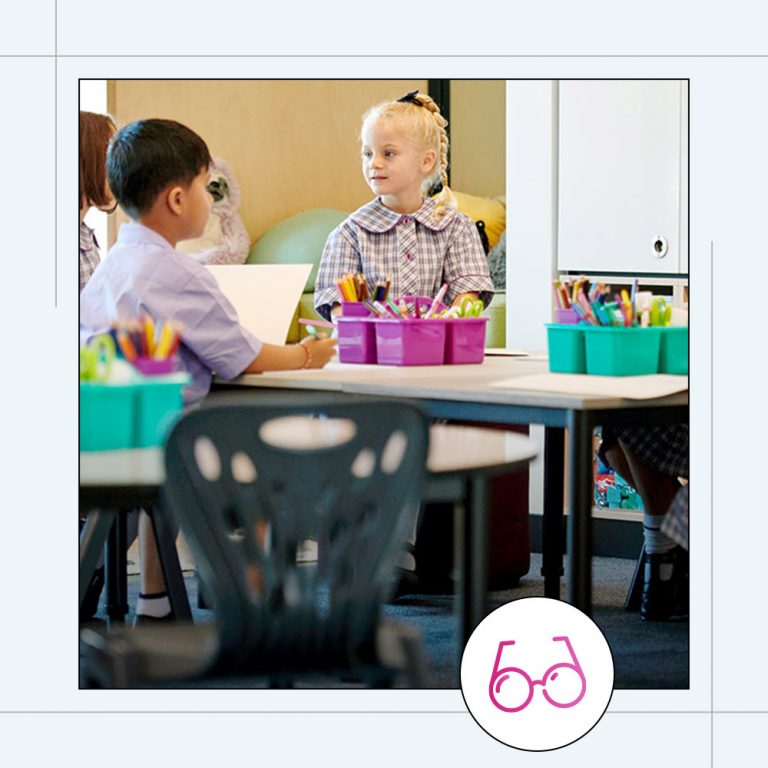We often think: a school, is a school, is a school. They look similarly recognisable from the outside. From the inside, they also have similar features and adornments. They even have a smell that is recognisable from one’s own childhood school experience! And yet, each school is incredibly diverse in their teaching and learning methods. The number of instructional models in schools today are a testimony to the diversity of thought and the subsequent branding of educational philosophies.
Problem Based Learning, Project Based Learning, Competency Based Learning, the list goes on! There are now so many of these, that commentators often refer to X-Based Learning, meaning that learning can be based on anything. But which is best for learners? One stand out philosophy, that relates to many others, and carries learners into the future, is Learner Agency.

Learner Agency refers to the ownership and control a learner has over their own learning. Under this philosophy, learners self-initiate their education and are driven by their needs and interests under teacher guidance. The benefits of Learner Agency are associated with real world skills where learners can transfer knowledge they’ve learnt in the classroom to new settings such as university or careers.
In the past, the traditional classrooms were the domain of the teacher where they dictated how, what and when students learnt. As we think about the rigid confines of these classrooms, we realise that the layout and physical environment were designed by the teacher. This design was mostly intended to create order and control. It was thought that control and order generated focus and attention and this in turn gave way to learning.
Now we have a different understanding about learning preferences, modes of learning, approaches to learning and the need for honing collaborative practices. Without a doubt, there are more sophisticated requirements placed on teachers, learners and learning spaces today. The shift to learner agency is an important part of this education evolution. But how do we allow for it? How do we achieve it?
When does a learner have no agency over their learning?
Basically, Learner Agency does not exist when learners have all decisions made regarding what, how and when they learn.
This includes the spaces where learning occurs. When furniture is fixed, uni-dimensional or difficult to move, there is essentially no allowance made for choice. Learner Agency will fail to flourish.
When does a learner have agency over their learning?
By and large, the essence of Learner Agency is choice and flexibility. When teachers have flexible teaching styles and learners feel they are in a safe environment, they are comfortable to speak and Learner Agency thrives. Agile, comfortable and flexible classroom furniture plays an important supporting role.

How can I embrace Learner Agency in my classroom?
Handing over the pathway to learning something can be confronting for teachers to embrace, especially if they are one who thrive on order and control. Learning is, and should be messy, and allowing this to occur takes time to develop. It’s not the flick of a switch, but more a slow migration to a different way of working. By embracing Learner Agency, we are embedding skills of self-management and direction and instilling the element of choice into our repertoire. The advocacy of Learner Agency starts with the teaching practices and the physical environment provided.
Creating an environment where learners feel valued and confident to share opinions and ideas is key to encouraging Learner Agency. Of course there is a human element to this, but furniture can play an important role. Soft furnished spaces, smart storage options for organised resources, collaborative group zones and quiet reflection areas help learners feel secure, inspired and comfortable to share.
Openly encourage choice. Ask for opinions. Organise activites that encourage discussion. Allow learners to create furniture configurations or choose where to complete an activity. This will provide an opportunity for learners to engage with and consider how they will use the space. Agency is supported when learners are invited to create and build the learning space they need to be successful in their own activity.
Another fundamental shift required is the need to be more invitational than directive.
Try using language that provides students choice and activates the space. For example: instead of, “Class! Sit in your chair and be quiet please. I have a message you need to hear.” Try, “I have a message to tell you. Please find a comfortable place to sit. You can use the floor cushions, the bean bags or the bar tables”. By inviting learners to have choice over where they can sit, they are afforded agency of location and comfort level.
Another way to teach and encourage agency is to model the possibilities yourself. Be heard to be expressing your opinions and ideas and be seen to be experimenting with the spaces and the furniture in your classroom.
Learner Agency is a powerful way of increasing engagement in the classroom.
When we consider the wellbeing and diversity of learners and their wide variety of skills, it is clear why Learner Agency is a key component in so many modern teaching and learning philosophies.
By giving learners ownership and choice over where and how they learn, they not only feel valued, they are building real-world skills for future success.













